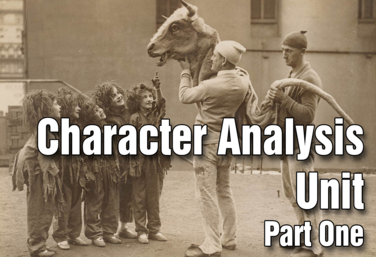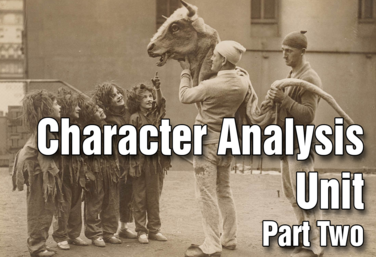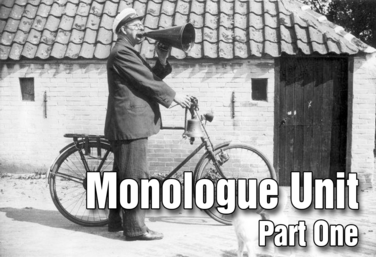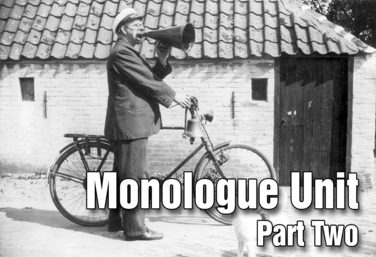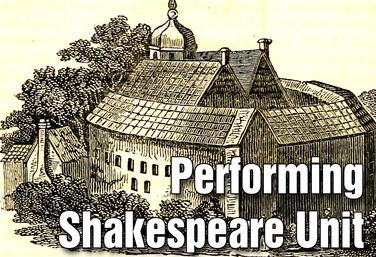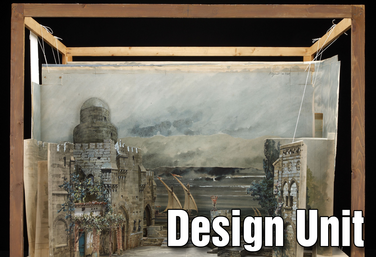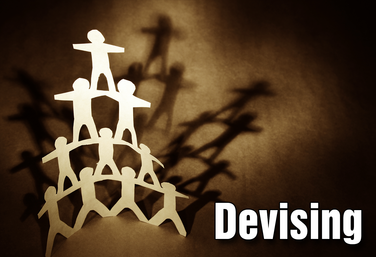Drama Two Curriculum
The Drama Two Curriculum is performance based. It has been developed to expand and deepen the students’ skills as artists. They will do so by building on material covered in the Drama One Curriculum, with units in: Character Analysis, Monologue Writing and Performance, Shakespeare Performance, and Design. The curriculum will culminate in a Devised Class Play.
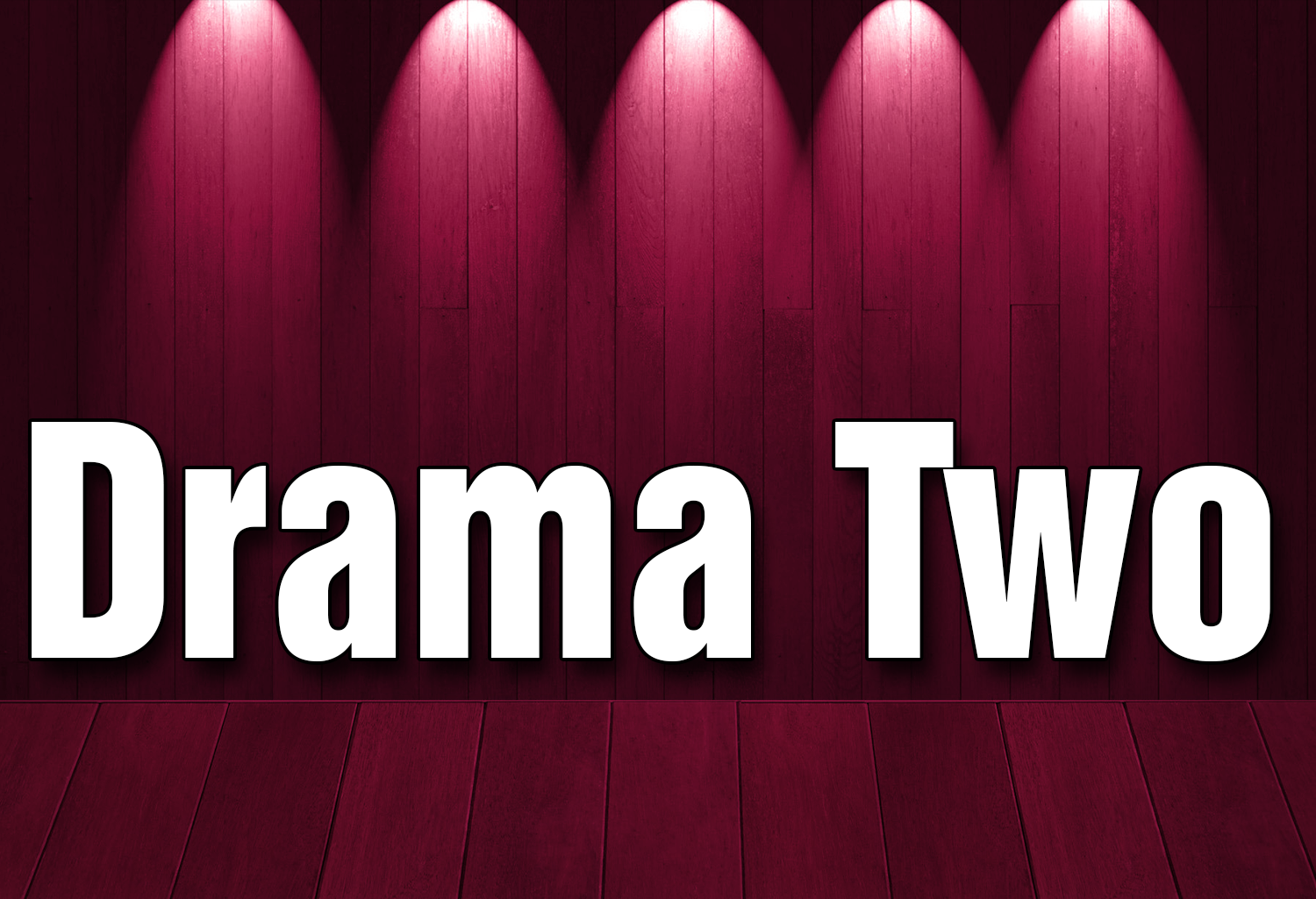
7 Units
Drama Two Overview
by Matt Webster
The Drama Two Curriculum was created as a model that empowers teachers to utilize the full content of the DTA Lesson Plan Library as either a foundation or a supplement to their entire classroom curriculum. With that in mind, the units are a combination of existing DTA material and new material. Lesson plans have been adapted to fit the needs of the curriculum (eg. The Colour Wheel Lesson Plan has been adapted from an existing costuming lesson plan in the Lesson Plan Library).
The Drama Two Curriculum is performance based. It has been developed to expand and deepen the students’ skills as artists. They will do so by building on material covered in the Drama One Curriculum, with units in: Character Analysis, Monologue Analysis and Writing, Shakespeare Performance, and Design. The curriculum will culminate in a Devised Class Play.
As you use this curriculum, think about how you can create your own units and adapt lesson plans based on the needs of your program.
Character Analysis - Part 1
by Matt Webster
The Drama Two Curriculum has been developed to expand and deepen students’ skills as artists. In this unit, students will explore character analysis, which is key to developing three-dimensional characters in monologues, scenes, and plays. In Part 1, they will start with Uta Hagen’s nine questions for character analysis.
Character Analysis - Part 2
by Matt Webster
The Drama Two Curriculum has been developed to expand and deepen students’ skills as artists. In this unit, students will explore character analysis, which is key to developing three-dimensional characters in monologues, scenes, and plays. Part 2 takes everything students have learned in Part 1 and applies it to an existing scene. Students will work in pairs or groups to analyze their characters, block and rehearse their scenes, and present a fully memorized piece in front of the class.
Monologues - Part 1
by Matthew Banaszynski
The Drama Two Curriculum was created as a model that empowers teachers to leverage the full content of the DTA Lesson Plan Library as either a foundation, or a supplement, to their entire classroom curriculum. With that in mind, Part 1 of this unit is built directly upon Matt Banaszynski’s excellent unit on writing monologues, Monologue Writing Made Easy.
In Part 1 of the Monologue Unit, students will learn the building blocks of how to write a monologue from story construction,
writing drafts, receiving feedback, and performing their original monologue.
Monologues - Part 2
by Matt Webster
In Part 2 of the Monologue Unit (Monologue Project: Analysis, Writing, and Performance), students analyze an existing monologue to determine the criteria for a “good” monologue. They will then apply what they learned in Part 1 (Monologue Writing Made Easy), adding in the criteria for a “good” monologue, to write and perform an original monologue.
Performing Shakespeare
by Matt Webster
In this unit, students are introduced to a series of lesson plans that explore non-traditional approaches to performing the works of William Shakespeare. By the end of the unit students will be exposed to a unique set of tools they can utilize as the foundations for analyzing, staging and performing a scene from Shakespeare’s canon. Students will then rehearse and perform a two-person Shakespearean scene.
Design
by Matt Webster
In this unit, students will explore and experiment with the basic building blocks of design: Line, Shape, and Color. Once students have a solid foundation of those concepts, they will move on to stage properties and scenic flats as additional building blocks of design. They will then apply their knowledge and skills to a series of assignments, so they can demonstrate their design knowledge and creativity.
Devising
by Corinna Rezzelle
While the Drama Two Curriculum has a focus on acting, it’s always important to include a unit on the technical theatre skills that are necessary to any production. Students will also be able to use what they’ve learned in this unit in their upcoming devising project.
Students will begin by exploring design for the stage by experimenting with line, shape, texture, size, and color. They will expand their understanding of stage properties and scenic flats. They will then apply their knowledge of these building blocks of design to create a high-concept design for a miniature “stage.”

